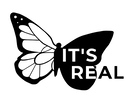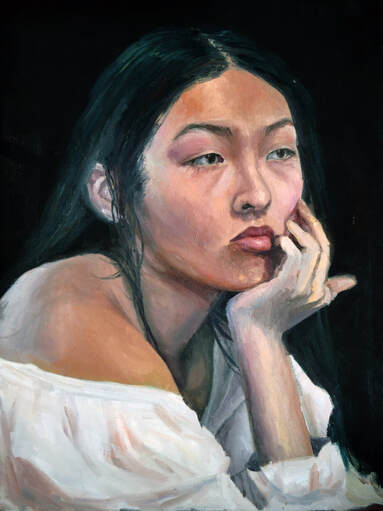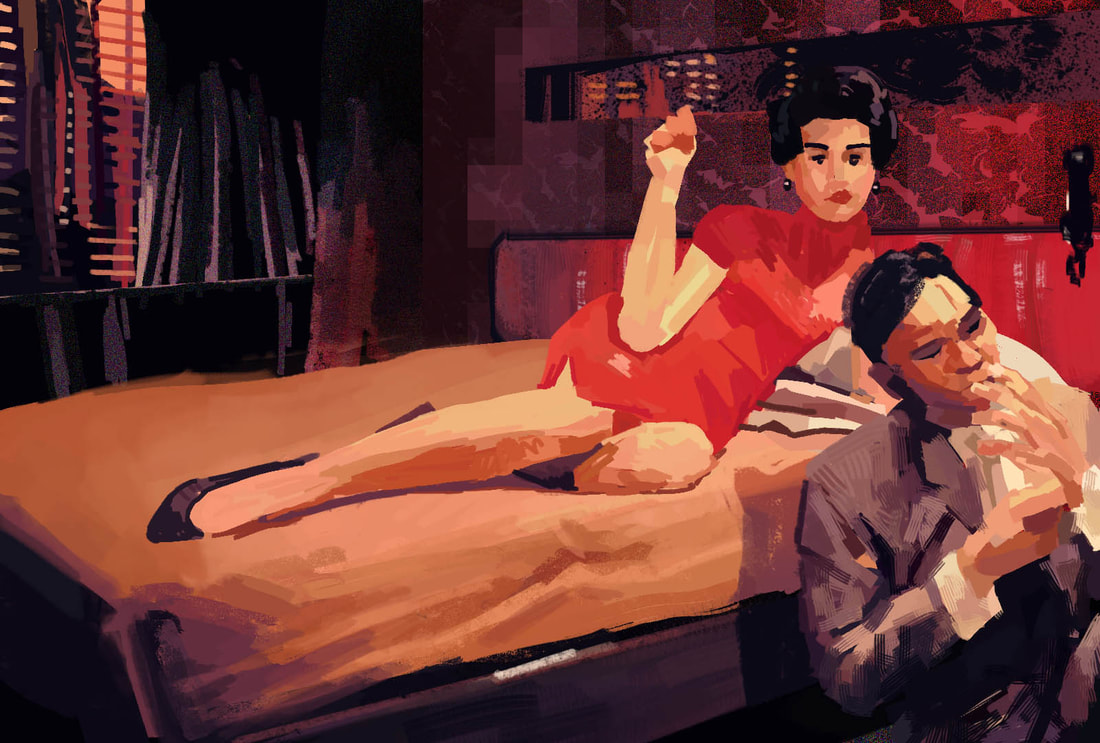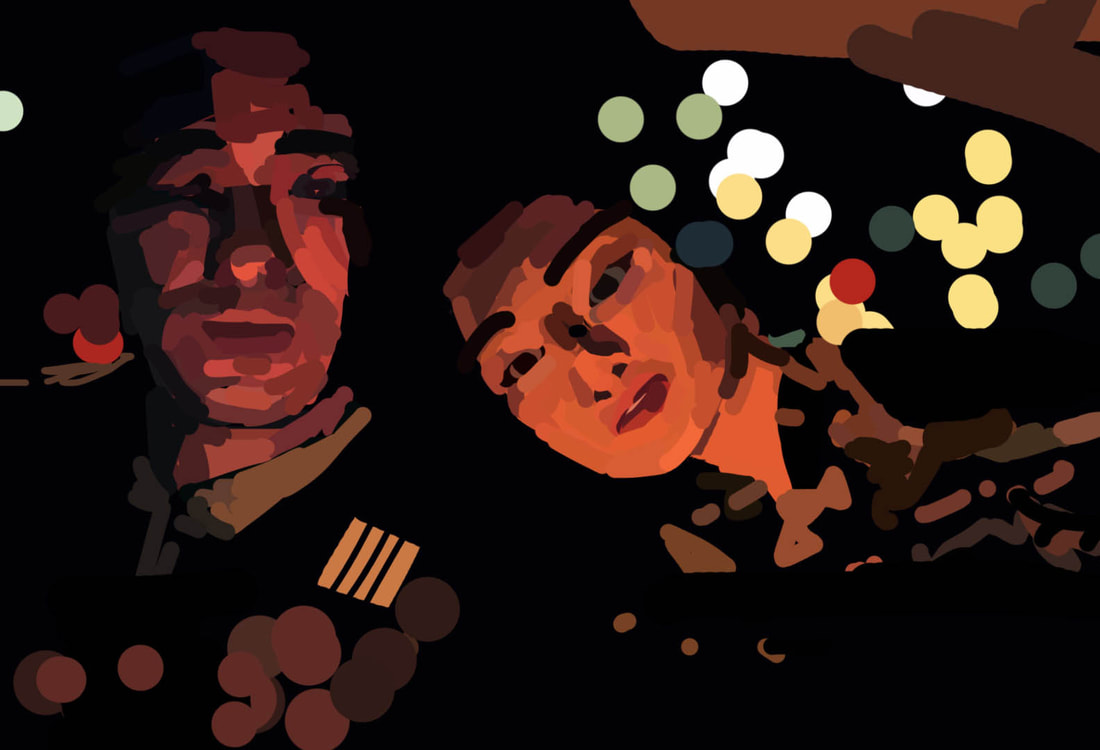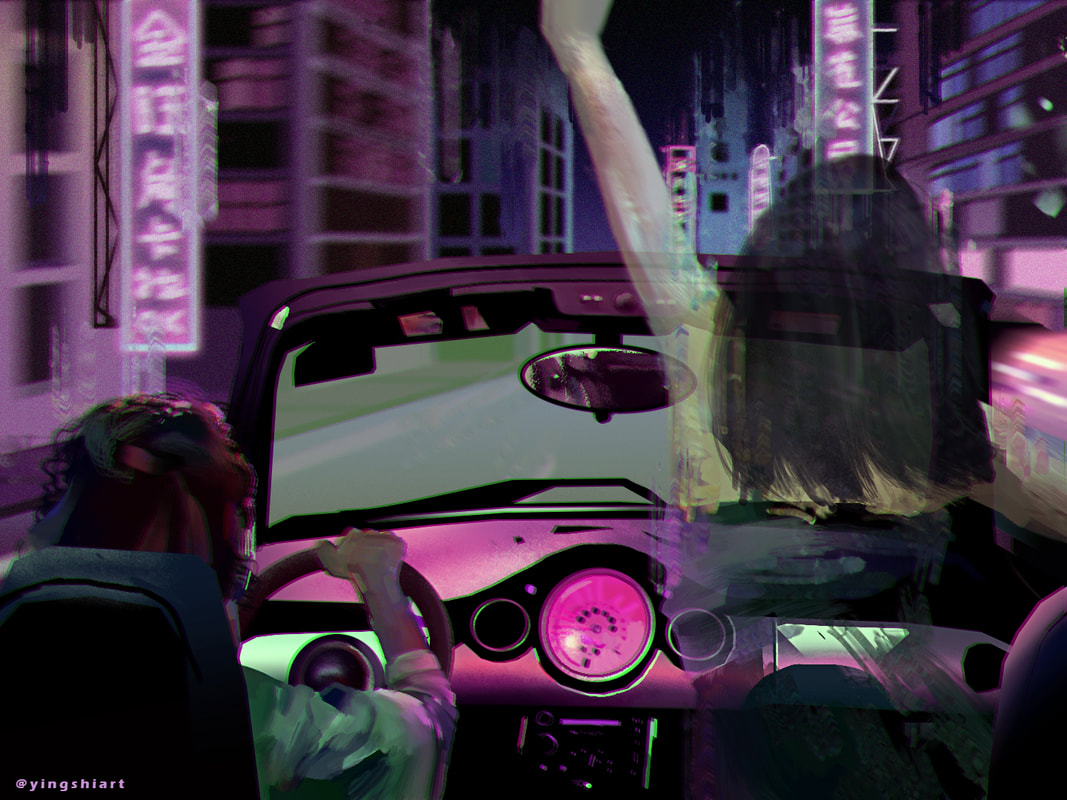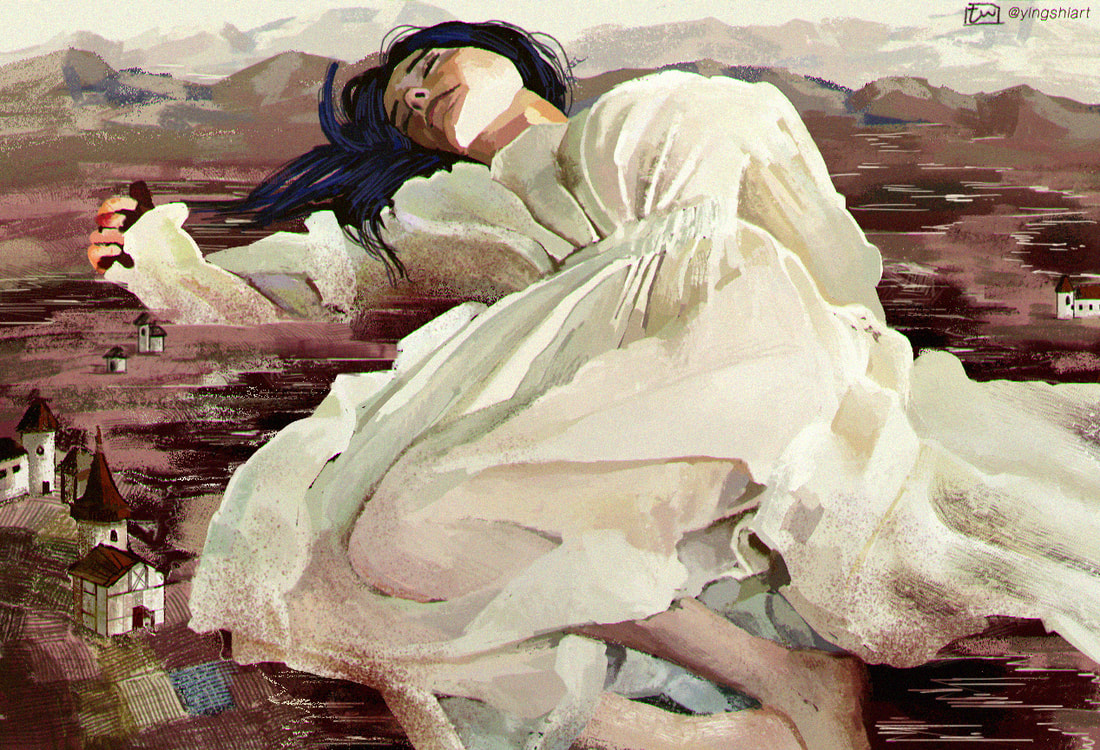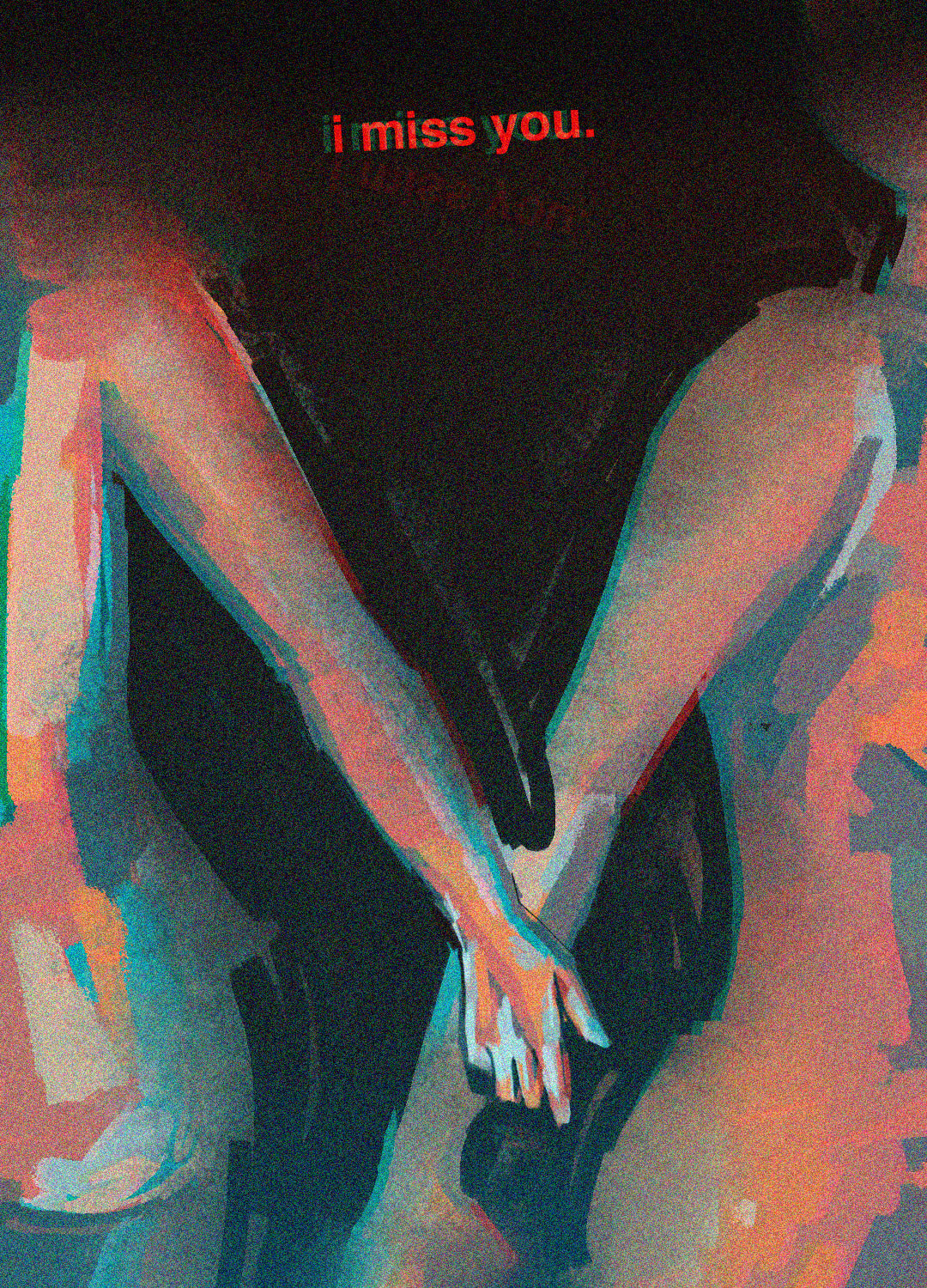Interview with Taylor Wang
Taylor Wang, Ana Chen
Taylor Wang, Ana Chen
Ana: Alright! So, thank you Taylor for agreeing to interview for It’s Real. I was wondering, just for a few warmup questions, if you could tell me a bit about yourself, and what mental health means to you, and if you want to talk about it, how COVID-19 has affected you and your mental health during this time.
Taylor: Thank you, Ana! I’m happy to be here. So, my name’s Taylor, and I’m currently 16-no, 17 years old, I turned 17 yesterday, and so I have had a lot of experiences with mental health in the past. As an Asian American, I’m sure the It’s Real community is well aware of this, but Asian Americans - especially Chinese parents, tend to not really be comfortable talking about topics related to mental health, like ‘oh, that’s a white person problem, that’s not really something that Asians deal with’. Growing up, I had a lot of issues with anxiety, that I still have a lot today, but being surrounded by a predominantly white environment where I didn’t really have a lot of peers who could relate to me on these types of issues that you deal with; specifically in Asian communities, I struggled a lot with communicating my feelings about that and just kind of bundling it all up in a really unhealthy way that I didn’t even realize was unhealthy until later on when I started educating myself on that and realizing like even like COVID-19, I think definitely my mental health has like actually improved because of this in a weird way, because I have more time now to relax and unwind. I think prior to the whole quarantine, it was probably on eof the busiest times in my entire life, like I’m in junior year so I have AP tests piling up, SAT, all that college stuff, and also I have to manage my organization--Student-Run Spaces-- which is Seattle-based, and we’re opening up chapters all over the world and it was just a lot of work and I was putting a lot of work on myself because I think part of the reason why is the fact that when you’re growing up as an Asian-American specifically, you kind of have this way where you link your mental health with- and your worthiness with- your level of productivity, so if I’m not being productive, I feel like so horrible about myself so all the time I would just try and pile as much work on as possible. Even if I felt like I couldn’t handle it, I would just force myself to try to balance all of it and it definitely was getting to a point where I was a little unhealthy, like I would be sleeping four hours per night. Just like, hustling every day and so this quarantine was definitely like a huge pause for everyone in the world basically. But for me, it was definitely a pause to reflect on that time and try to catch up on sleep and all of that.
Ana: This is awesome. As someone who is struggling with anxiety, I can totally relate to everything you said about productivity and like worthiness, and I was wondering if you could elaborate a bit more on your own journey with anxiety, and mental health issues, and how you’d manage to bring awareness to yourself and maybe how art has helped you along that journey.
Taylor: Yeah! So, um, with anxiety, I think I have always had - it’s just been something I’ve had like since I was little. It’s not something I can change or try to fix. And for a long time, I didn’t realize that. I thought- I kept on thinking ‘why am I different from other people’? And I have an older sister, so my parents had experience in raising a child and for my sister it was very easy, she didn’t have any issues with school or anything. She kind of just like went off to college all on her own. She didn’t even tell my parents what colleges she was applying to, she was very independent. So when they were raising me, I think it was a very different experience for them, I think they didn’t know how to handle it, and they reached out to *audio distorted* for everyone involved. It says my connection is unstable, can you hear me?
Ana: Hey, I can hear you now. Yeah, I can hear you now, but you cut out for like the last minute or so, could you rewind back to your sister?
Taylor: Yeah. So, my sister was the oldest child, so my parents had experience raising her, and it was a very free like-they did not have to do anything with her, it was just she went off to college on her own, and for me to have this issue with anxiety, I think was very new for them, and like especially in like the Chinese community, they would reach out to their friends and stuff, to ask them ‘do you have any advice on what’s going on?’ and it was just very hard for them I think. And so, what happened in the beginning, because they just were not familiar with this, unlike if you were raised in America, you might have more knowledge of this, but if you were raised in rural China, no one cares about if you have to *audio distorted* or something like that. So, [being] unaware about it was another reason why my anxiety really spiked, especially at the beginning of high school because I moved to a different high school where I didn’t know anybody, it was very heavily white-dominated, there were not many people of color, I think there were two black people there and like four Asians. So, I really struggled to adapt to that environment where people didn’t really like have knowledge on people of color, like the education wasn’t as good I would say in that sense. So, I know you’re from Seattle, too, right? And so Seattle tends to be a pretty liberal area you’d think, but with from like suburbs and enclaves where there’s not diversity whatsoever, its very like not accepting. So I think that art definitely helped me during that period because I really started to get engaged with the online community and just posting art and stuff on my account and submitting to art competitions, all of that stuff. So, in a way, it helped me connect with the community at a time when my real life community wasn’t really so great, like I had my friends from back at my old school, but obviously I couldn’t see them every day, so that really helped me cope and survive during that time I think.
Ana: That’s awesome, and your artwork’s incredible. Thank you so much for sharing this with me. You mentioned how COVID-19 is offering you a kind of break from everything, and how that’s been a little silver lining for you, have you felt any pressures to keep productive during this time, because I’ve known that a lot of artists conversely they feel like this is time for them to really start on their next big project, to really make something out of this quarantine. So what do you say to that?
Taylor: Yeah, I definitely would say I get that pressure too, like in a way it’s like a paradox, like I’m trying to relax, like I’m aware of all those posts you know on Instagram, that are saying like ‘Take this time to relax’, ‘Don’t feel the need to be productive all the time’, but at the same time I do I definitely do still feel the need to be productive, especially when I see other people out there grinding still, I just have like, I feel fulfilled during this time I think when I have like you know my Google Calendar scheduled full of meetings, when I have like Zoom meetings every day, and the Slack group chats are all full of messages. That for me is really fulfilling and it helps me keep a routine to my day, which is what I know is the case for a lot of people. So especially during this time that’s really chaotic, I think part of the way that I’m trying to cope with it is I’m finding a good balance between relaxing and spending time with family and doing things I normally wouldn’t have time to do, like watching a movie for example or something like that. Versus also being able to keep on top of my work and having that laid out schedule which really helps you stay fulfilled during this time, because it can be really easy to fall into a hole where you’re feeling bad about yourself, self-deprecating, and thinking like ‘why am not doing so much work, like just right now, why am I just holed up at home’ and so I think having work to do right now is actually very helpful because it helps you be productive and it helps you keep your morale up I think.
Ana: Yeah I totally agree with like everything you said. And I was wondering if you could talk now about your art and your organization and how pursuing as you said a somewhat unconventional career for an Asian American has turned out along high school and how it’s been maybe not- hm- how it’s just been like an integral part of your life and how you’ve come to accept art as not just a hobby but a serious pursuit. I think you’re frozen by the way.
Taylor: Can you hear me now?
Ana: Yeah, I can hear you now. Do you want to start over from that question?
Taylor: Yeah, I didn’t start. Sorry, my internet’s kinda bad right now. So, I’ve always been interested in art, since I was very little, but I never really got involved in art organizing or community organizing until I reached high school. And so, it’s definitely been the best but also the most stressful experience I’ve ever had I would say. I think what blows my mind the most is the fact that this whole project Student Art Spaces started out with just me and my friends in a Starbucks and we would look up things like ‘What is the IRS’ and ‘What is the utility bill’ because we didn’t know anything. And at the time I have no --I would say I had no intention of sparking like a mobile sort of commitment to this movement. All I knew at the time was that was there weren’t many art organizations in Seattle specifically dedicated to teenagers. There were some that were promoting art but not youth specifically. So, I also started doing research around that time about how much art education is valued and I found out that Washington actually ranked 45th in art in education funding. So I was really shocked by that number because you’d think being in a city and having these resources would allow us to be able to thrive artistically, but that’s actually not the case. And so, after finding out all of that, I was--I really felt like that spark to do something and start something of my own, and so, that’s when we started doing these exhibits that were cost free and dedicated to teenagers. And at the time my parents were kinda just ‘okay, we’ll let her do what she wants, we don’t really know what’s going on, but sure’ and so all the way up until I would say like out first ever exhibit, which happened in August of 2019, it was the modern youth identity. It was such a huge success. We had 43 young artists exhibited from all over the world from Brazil, from Hong Kong, and we paid for all of it through Kickstarter funding and grants from the city of Seattle and so that was when my parents really realized I think that there’s a true passion and commitment to this project for me. Which is I think what they wanted to see I think they wanted to see this wasn’t just like some random thing that I would be lazy about but they really started to support me after I thik and I’m really grateful for that because I know at the same time a lot of parents would not be supportive still they want their kid to pursue that, I guess, normal path of becoming a doctor or lawyer which is still really prevalent today I think. Like, parents who just want their kid-they just want the best for their kids, and they think what ‘the best’ is is becoming a doctor, which is like stability and money, but it doesn’t always mean happiness, and I think being happy with your career is just what’s gonna get you the furthest even if it’s not the career that makes the most money or has the most prestige, I guess. And so, with that project, I really started to realize-I really started to grow into that career and I even started to elaborate more on my art and figure out more about what I wanted my art to mean for me. Because prior to that I didn’t really have a lot of insight into that, I didn’t have a lot of experience with that, because I didn’t like go to art classes or anything. So, I think this whole project Student Art Spaces has really helped me not only be able to extend my platform to people who are underserved, people in communities where-just South Seattle, South King County-where things just aren’t as good in terms of art education opportunities. And it’s also helped me realize how I can-like what my place in the world, like what my purpose is.
Ana: That’s incredible and inspiring. Thank you so much for putting this together and for looking into Washington’s art education services because one thing that was missing from my high school education was just a lot of art, and I think high school could have turned out very different for me if I’d had art lessons, or more exposure to the arts. So I was wondering- you were talking a bit about how running Student Art Spaces has changed your own viewpoint on art, and I was wondering if you could continue to elaborate on where you draw your inspiration from and what art means to you and what you want to communicate through your art.
Taylor: Thank you, Ana! I’m happy to be here. So, my name’s Taylor, and I’m currently 16-no, 17 years old, I turned 17 yesterday, and so I have had a lot of experiences with mental health in the past. As an Asian American, I’m sure the It’s Real community is well aware of this, but Asian Americans - especially Chinese parents, tend to not really be comfortable talking about topics related to mental health, like ‘oh, that’s a white person problem, that’s not really something that Asians deal with’. Growing up, I had a lot of issues with anxiety, that I still have a lot today, but being surrounded by a predominantly white environment where I didn’t really have a lot of peers who could relate to me on these types of issues that you deal with; specifically in Asian communities, I struggled a lot with communicating my feelings about that and just kind of bundling it all up in a really unhealthy way that I didn’t even realize was unhealthy until later on when I started educating myself on that and realizing like even like COVID-19, I think definitely my mental health has like actually improved because of this in a weird way, because I have more time now to relax and unwind. I think prior to the whole quarantine, it was probably on eof the busiest times in my entire life, like I’m in junior year so I have AP tests piling up, SAT, all that college stuff, and also I have to manage my organization--Student-Run Spaces-- which is Seattle-based, and we’re opening up chapters all over the world and it was just a lot of work and I was putting a lot of work on myself because I think part of the reason why is the fact that when you’re growing up as an Asian-American specifically, you kind of have this way where you link your mental health with- and your worthiness with- your level of productivity, so if I’m not being productive, I feel like so horrible about myself so all the time I would just try and pile as much work on as possible. Even if I felt like I couldn’t handle it, I would just force myself to try to balance all of it and it definitely was getting to a point where I was a little unhealthy, like I would be sleeping four hours per night. Just like, hustling every day and so this quarantine was definitely like a huge pause for everyone in the world basically. But for me, it was definitely a pause to reflect on that time and try to catch up on sleep and all of that.
Ana: This is awesome. As someone who is struggling with anxiety, I can totally relate to everything you said about productivity and like worthiness, and I was wondering if you could elaborate a bit more on your own journey with anxiety, and mental health issues, and how you’d manage to bring awareness to yourself and maybe how art has helped you along that journey.
Taylor: Yeah! So, um, with anxiety, I think I have always had - it’s just been something I’ve had like since I was little. It’s not something I can change or try to fix. And for a long time, I didn’t realize that. I thought- I kept on thinking ‘why am I different from other people’? And I have an older sister, so my parents had experience in raising a child and for my sister it was very easy, she didn’t have any issues with school or anything. She kind of just like went off to college all on her own. She didn’t even tell my parents what colleges she was applying to, she was very independent. So when they were raising me, I think it was a very different experience for them, I think they didn’t know how to handle it, and they reached out to *audio distorted* for everyone involved. It says my connection is unstable, can you hear me?
Ana: Hey, I can hear you now. Yeah, I can hear you now, but you cut out for like the last minute or so, could you rewind back to your sister?
Taylor: Yeah. So, my sister was the oldest child, so my parents had experience raising her, and it was a very free like-they did not have to do anything with her, it was just she went off to college on her own, and for me to have this issue with anxiety, I think was very new for them, and like especially in like the Chinese community, they would reach out to their friends and stuff, to ask them ‘do you have any advice on what’s going on?’ and it was just very hard for them I think. And so, what happened in the beginning, because they just were not familiar with this, unlike if you were raised in America, you might have more knowledge of this, but if you were raised in rural China, no one cares about if you have to *audio distorted* or something like that. So, [being] unaware about it was another reason why my anxiety really spiked, especially at the beginning of high school because I moved to a different high school where I didn’t know anybody, it was very heavily white-dominated, there were not many people of color, I think there were two black people there and like four Asians. So, I really struggled to adapt to that environment where people didn’t really like have knowledge on people of color, like the education wasn’t as good I would say in that sense. So, I know you’re from Seattle, too, right? And so Seattle tends to be a pretty liberal area you’d think, but with from like suburbs and enclaves where there’s not diversity whatsoever, its very like not accepting. So I think that art definitely helped me during that period because I really started to get engaged with the online community and just posting art and stuff on my account and submitting to art competitions, all of that stuff. So, in a way, it helped me connect with the community at a time when my real life community wasn’t really so great, like I had my friends from back at my old school, but obviously I couldn’t see them every day, so that really helped me cope and survive during that time I think.
Ana: That’s awesome, and your artwork’s incredible. Thank you so much for sharing this with me. You mentioned how COVID-19 is offering you a kind of break from everything, and how that’s been a little silver lining for you, have you felt any pressures to keep productive during this time, because I’ve known that a lot of artists conversely they feel like this is time for them to really start on their next big project, to really make something out of this quarantine. So what do you say to that?
Taylor: Yeah, I definitely would say I get that pressure too, like in a way it’s like a paradox, like I’m trying to relax, like I’m aware of all those posts you know on Instagram, that are saying like ‘Take this time to relax’, ‘Don’t feel the need to be productive all the time’, but at the same time I do I definitely do still feel the need to be productive, especially when I see other people out there grinding still, I just have like, I feel fulfilled during this time I think when I have like you know my Google Calendar scheduled full of meetings, when I have like Zoom meetings every day, and the Slack group chats are all full of messages. That for me is really fulfilling and it helps me keep a routine to my day, which is what I know is the case for a lot of people. So especially during this time that’s really chaotic, I think part of the way that I’m trying to cope with it is I’m finding a good balance between relaxing and spending time with family and doing things I normally wouldn’t have time to do, like watching a movie for example or something like that. Versus also being able to keep on top of my work and having that laid out schedule which really helps you stay fulfilled during this time, because it can be really easy to fall into a hole where you’re feeling bad about yourself, self-deprecating, and thinking like ‘why am not doing so much work, like just right now, why am I just holed up at home’ and so I think having work to do right now is actually very helpful because it helps you be productive and it helps you keep your morale up I think.
Ana: Yeah I totally agree with like everything you said. And I was wondering if you could talk now about your art and your organization and how pursuing as you said a somewhat unconventional career for an Asian American has turned out along high school and how it’s been maybe not- hm- how it’s just been like an integral part of your life and how you’ve come to accept art as not just a hobby but a serious pursuit. I think you’re frozen by the way.
Taylor: Can you hear me now?
Ana: Yeah, I can hear you now. Do you want to start over from that question?
Taylor: Yeah, I didn’t start. Sorry, my internet’s kinda bad right now. So, I’ve always been interested in art, since I was very little, but I never really got involved in art organizing or community organizing until I reached high school. And so, it’s definitely been the best but also the most stressful experience I’ve ever had I would say. I think what blows my mind the most is the fact that this whole project Student Art Spaces started out with just me and my friends in a Starbucks and we would look up things like ‘What is the IRS’ and ‘What is the utility bill’ because we didn’t know anything. And at the time I have no --I would say I had no intention of sparking like a mobile sort of commitment to this movement. All I knew at the time was that was there weren’t many art organizations in Seattle specifically dedicated to teenagers. There were some that were promoting art but not youth specifically. So, I also started doing research around that time about how much art education is valued and I found out that Washington actually ranked 45th in art in education funding. So I was really shocked by that number because you’d think being in a city and having these resources would allow us to be able to thrive artistically, but that’s actually not the case. And so, after finding out all of that, I was--I really felt like that spark to do something and start something of my own, and so, that’s when we started doing these exhibits that were cost free and dedicated to teenagers. And at the time my parents were kinda just ‘okay, we’ll let her do what she wants, we don’t really know what’s going on, but sure’ and so all the way up until I would say like out first ever exhibit, which happened in August of 2019, it was the modern youth identity. It was such a huge success. We had 43 young artists exhibited from all over the world from Brazil, from Hong Kong, and we paid for all of it through Kickstarter funding and grants from the city of Seattle and so that was when my parents really realized I think that there’s a true passion and commitment to this project for me. Which is I think what they wanted to see I think they wanted to see this wasn’t just like some random thing that I would be lazy about but they really started to support me after I thik and I’m really grateful for that because I know at the same time a lot of parents would not be supportive still they want their kid to pursue that, I guess, normal path of becoming a doctor or lawyer which is still really prevalent today I think. Like, parents who just want their kid-they just want the best for their kids, and they think what ‘the best’ is is becoming a doctor, which is like stability and money, but it doesn’t always mean happiness, and I think being happy with your career is just what’s gonna get you the furthest even if it’s not the career that makes the most money or has the most prestige, I guess. And so, with that project, I really started to realize-I really started to grow into that career and I even started to elaborate more on my art and figure out more about what I wanted my art to mean for me. Because prior to that I didn’t really have a lot of insight into that, I didn’t have a lot of experience with that, because I didn’t like go to art classes or anything. So, I think this whole project Student Art Spaces has really helped me not only be able to extend my platform to people who are underserved, people in communities where-just South Seattle, South King County-where things just aren’t as good in terms of art education opportunities. And it’s also helped me realize how I can-like what my place in the world, like what my purpose is.
Ana: That’s incredible and inspiring. Thank you so much for putting this together and for looking into Washington’s art education services because one thing that was missing from my high school education was just a lot of art, and I think high school could have turned out very different for me if I’d had art lessons, or more exposure to the arts. So I was wondering- you were talking a bit about how running Student Art Spaces has changed your own viewpoint on art, and I was wondering if you could continue to elaborate on where you draw your inspiration from and what art means to you and what you want to communicate through your art.
|
On behalf of It’s Real, we would like to thank Taylor for her time and words! Her art can be found on her Instagram: @yingshiart or on her website tayloryingshi.com
|
